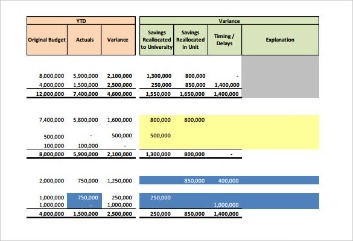Content
- Is cost of goods sold a debit or credit?- Video
- What is the formula for closing entries under the periodic inventory method?
- Example of a Cost of Goods Sold Journal Entry
- Want More Helpful Articles About Running a Business?
- The Benefits of Using COGS
- Stay up to date on the latest accounting tips and training

Depending on the COGS classification used, ending inventory costs will obviously differ. First-in, first-out is a valuation method in which the assets produced or acquired first are sold, used, or disposed of first. COGS only applies to those costs directly related to producing goods intended for sale. So the cost of goods sold is an expense charged against Sales to work out Gross profit. These pens are now known as inventory because they are purchased with the intention of resale. To calculate your turnover ratio, you’ll need to know the beginning balance and ending balance of inventory, as well as all COGS.
How do you record COGS in accounting?
You should record the cost of goods sold as a business expense on your income statement. Under COGS, record any sold inventory. On most income statements, cost of goods sold appears beneath sales revenue and before gross profits. You can determine net income by subtracting expenses (including COGS) from revenues.
Inventory at December 31, 2002Cost of Item Z$50.00If Item Z is sold in 2003, the cost will flow to the Income Statement for 2003, and the gross profit will be reported on that income statement. Expenses are recorded in a journal entry as a debit to the expense account and a credit to either an asset or liability account. The COGS Expense account will be increased by debits and decreased by credits. Cost Of Goods Sold Journal Entry Cogs Conversely, all accounts with a natural credit balance will increase in amount when a credit entry is added to them and decrease in amount when a debit entry is added to them. Revenues, liabilities, and equity are the type of accounts that increase with credit and decrease with debit. Also, all accounts can be credited or debited depending on the kind of transaction that takes place.
Is cost of goods sold a debit or credit?- Video
Ourfinancial planning and analysis (FP&A)software was created specifically to aid small businesses. Like operating expenses and other cost categories, COGS is a debit in a business’s ledger. Average costing – In NetSuite, this is the default costing method. COGS are calculated as the total units available during a period divided by the beginning inventory cost plus the cost of additions to inventory. Once the ending inventory and cost of goods sold are clarified, the accounts require adjustment to reflect the ending inventory balance and the cost of goods sold.
- The liability accounts are not “bad”’; the goal is to minimize them in relation to gross income to arrive at higher net income, or profitability.
- In practice, however, companies often don’t know exactly which units of inventory were sold.
- In addition, COGS is used to calculate several other important business management metrics.
- The periodic system indicates that the Inventory account will be updated periodically, such as on the last day of the accounting year.
How do you think they counted and valued their ending inventory? They weighted all the opened containers , and used their cost per pound, to calculate the value of their ending inventory. This may seem a bit unconventional, but it is a very good method, and entirely acceptable. The grocery will https://kelleysbookkeeping.com/ use a flow assumption to value its milk inventory at the end of the year. They will use FIFO, assuming that the milk on hand is the last milk that was bought during the year. The cost of keeping that much detailed information would exceed the usefulness, or benefit, of the information.
What is the formula for closing entries under the periodic inventory method?
The costing calculation will vary, depending on the costing system being used. For example, the cost of goods sold for a bakery would be the cost of labor used to make the baked goods and ingredients. Only costs directly linked to producing baked goods are included in the cost of goods sold. Costs that aren’t directly involved in the production of goods, such as distribution costs, utilities, and rent, are not included in COGS. The debit, merchandise inventory , is subtracted from that total to determine the balancing debit to the cost of goods sold.
The information from the example data illustrates the perpetual inventory method. A unique challenge for construction businesses is aligning the timing of recording Revenue and COGS. For example, let’s say a construction business is using COGS but 75% of the Revenue is on the balance sheet as a deposit liability. They will finish the job and the Revenue will be recognized in the following month. This would mean all of the costs would be recorded in months 1 and 2, but the Revenue would be recorded in month 3. Both must hit the PL at the same time or the monthly Gross Profit $ and Margin % will be very difficult to track.

